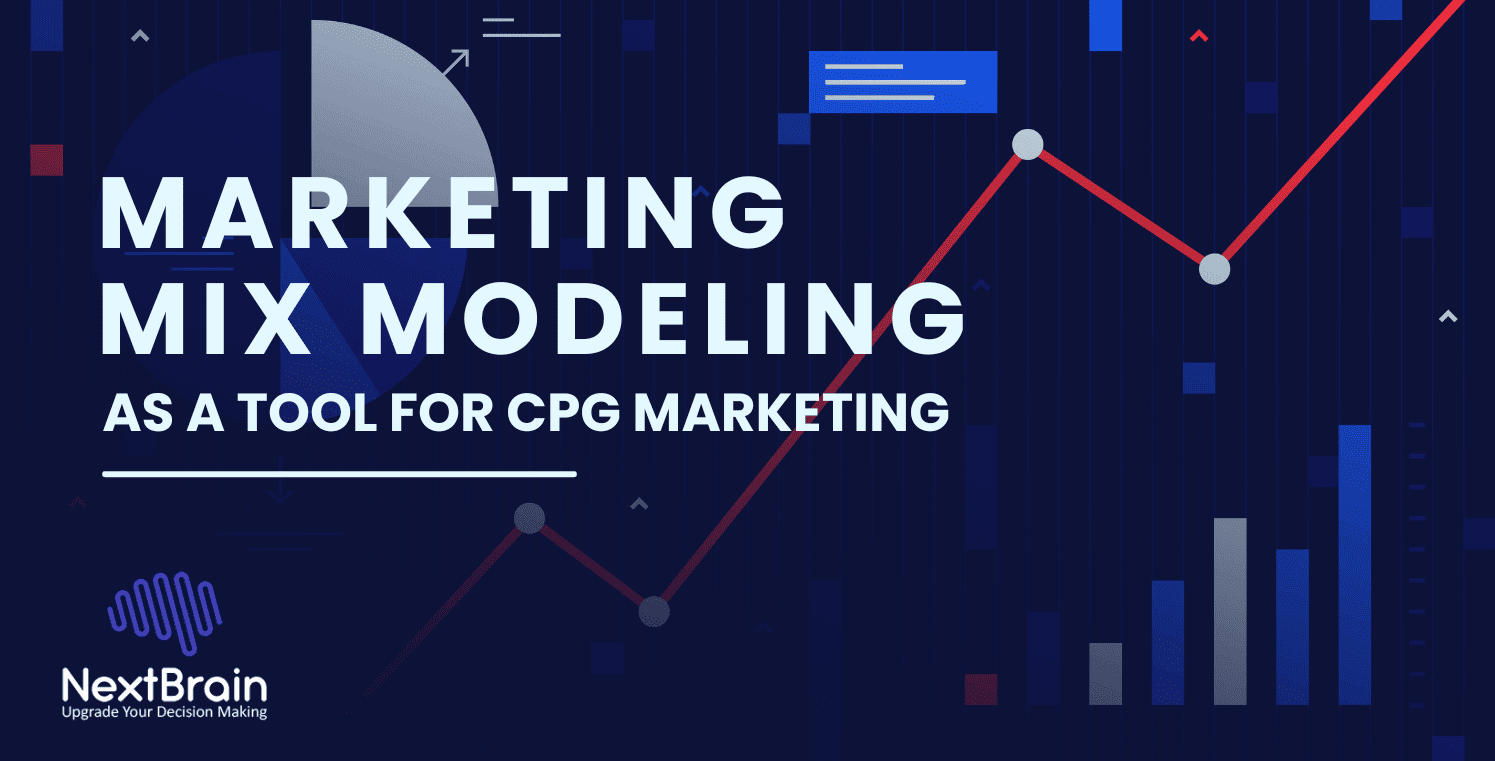
Most CPG marketing teams rely on primary and secondary research data to optimize their marketing tactics, yet many neglect the importance of considering outreach marketing effectiveness when crafting an integrated plan. A holistic marketing approach will track and measure parameters like:
- What media are used
- Efficiency of each channel
- The utilization of different campaigns
- The utilization of optimal media environments
- Different media types generate various returns and sales uplifts.
- How often must ads be renewed?
Marketing Mix Modeling (MMM) is the practice of using statistical data to analyze past effects of marketing spend on sales and make informed decisions regarding moving forward with future sales and marketing strategies. Marketing Mix Models serve as an intermediary between parameters like marketing spend and sales revenue to increase marketing ROI for investments.
Consumer Packaged Goods, or CPG, is among the first sectors to embrace Marketing Mix Modeling. Manufacturers and retailers invest in statistical analysis because their industry faces low contribution margins and greater competition for every SKU offered, in addition to having multiple marketing media strategies in use. A Marketing Mix Model solution can be especially useful for large brands with wide geographic reach, many SKUs, and an array of marketing channels; its insights allow them to draw insights from their data for adjustments in real-time.
Why do CPG companies utilize marketing mix modeling?
Marketing Attribution has gained more recognition with the proliferation of digital marketing and businesses that prioritize it as part of their operations. Customers may conduct most or all of their customer journey online; MMM and marketing attribution used both tools concurrently; however, the choice depends upon industry type.
With the latest updates in privacy laws and corporate policies, companies are forced to think about adopting Market Mix Modeling, since Market Mix Modeling provides a privacy-safe solution unaffected by recent privacy updates like GDPR or Apple’s restrictions regarding IFDA for iOS devices. Automated Marketing Mix Modeling helps with budget planning by taking into account both external and internal factors – this can especially prove helpful for Chief Marketing Officers as Market Mix Modeling offers them a 360° view of marketing trends.
Marketing Mix Modeling: An Guide for Optimizing CPG Marketing
CPG marketers face a constant struggle when allocating their marketing budget between traditional and digital channels.
An effective marketing mix model should provide insight into the effect each marketing channel has on sales. A properly executed model can calculate ROI for past investments, forecast likely changes to marketing mix variables and isolate their effects from external and internal factors.
Here is a guide that can assist in optimizing CPG marketing using Marketing Mix Modeling:
Data Collection: Gather historical information regarding marketing activities, sales performance and other relevant factors associated with CPG products. Data points that are typically collected include advertising, promotions, pricing and distribution details, as well as competitor activity indicators and economic indicators that may impact them.
Define Your Dependent Variable: For marketing MMM purposes, the dependent variable typically refers to revenue or unit sales of CPG products – it will be this variable that needs optimizing.
Locate Independent Variables: Determine the independent variables that could have an impact on sales of CPG products, such as digital advertising (TV/radio/online), promotions, in-store displays, social media engagement efforts or any other marketing initiatives.
Preprocessing Data: Clean the data and preprocess it to eliminate outliers, missing data or inconsistencies and ensure they can be easily used for modeling. Ensure the format suitable for modeling.
Build the Model: Choose an analytical modeling technique, such as regression analysis, to establish relationships between dependent and independent variables, with multi-linear regression being one method used at MMM as the common technique for this.
Interpretation of the Model: Conduct a regression to understand how each marketing input affects sales. Coefficients from the regression model will show both direction and strength between marketing drivers and sales results.
Model Validation: Test your model’s accuracy and reliability using statistical measures such as R-squared or mean absolute percentage error.
Scenario Analysis: Use scenario analysis to simulate changes in marketing budgets and activities in order to identify effective marketing strategies which will maximize sales.
Optimal Budget Allocation: Utilize insights from the model to optimize marketing budgets across online and offline channels and activities, prioritizing those which offer a maximum return. It suggests investing in activities that will bring back maximum results from marketing investment.
Monitor and Refining: Constantly assess and refine the performance of marketing campaigns and update your model with new data so you can adjust to market changes while further optimizing your model.
The Marketing Mix Optimization Model should not be seen as the sole tool at your disposal for CPG marketing strategies; when used in combination with other advanced analytics tools like customer segmentation analysis, market research, and real-time analysis, it can produce more successful and comprehensive strategies.
Marketing Mix Modelling Solution by NextBrain.
NextBrain offers an expansive library of maths functions designed specifically for MMM. Our platform allows experts to use regression, time series modeling, optimization algorithms and other mathematical functions to make sense of its complex structure.
NextBrain utilizes advanced algorithms for extracting valuable insights from MMM datasets. Our platform utilizes cutting-edge no-code machine learning techniques such as Deep Learning, Ensemble Methods, and Predictive Modeling Techniques to identify hidden patterns or interactions among multiple marketing variables.
The Datasets may include all sales data – primary, secondary and point-of-sale; market research results as well as past campaign and promotion information; data from social media outlets like Twitter, key events or weather analytics. NextBrain uses its analysis of this information to predict sales based on each marketing recommendation, thus helping business leaders make more effective business decisions.
NextBrain’s AI-powered tool, designed to assist marketers and users alike, is simple to use. Measure the success of future campaigns by comparing them with incremental sales and return on investment generated from each one.
Speak with one of our experts if you would like to see NextBrain’s advanced no-code AutoML tool in action or learn more about its capabilities.

 +34 910 054 348
+34 910 054 348 +44 (0) 7903 493 317
+44 (0) 7903 493 317